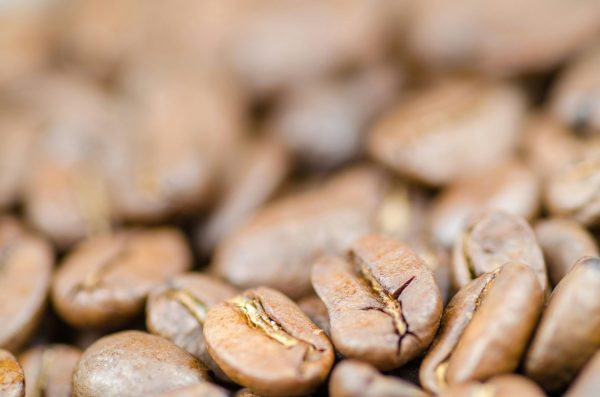
Coffee drinkers often wonder whether the physical dimensions of coffee beans impact the taste in their cup. While larger beans are generally associated with superior flavor, the relationship between size and taste proves more complex than simple bigger-equals-better logic.
How Coffee Bean Size Is Measured and Classified
Green coffee beans are sorted using screens – metal sheets with specifically sized, round holes punched into them. Screens are numbered 8 through 20, with the number referring to how many 64ths of an inch the holes measure. For example, a size 18 screen contains holes that are 18/64 inch wide, while a size 14 screen has 14/64 inch holes.
The Specialty Coffee Association (SCA) uses screens ranging from 14/64″ to 18/64″ diameter holes for sorting coffee. During classification, 300 grams of coffee is ideally examined, though 100 grams often suffices for lower-grade beans. The screening process ensures uniformity within each batch, which proves essential for consistent roasting and flavor development.
The SCA permits a 5-percent variance in their classification system, acknowledging that perfect uniformity remains impractical in natural agricultural products.
The Connection Between Bean Size and Flavor Development
In general, larger beans tend to produce better flavor, mainly due to the extended time the plant had to grow and ripen, allowing more opportunity to develop aroma and taste compounds. Large beans often contain more oils and sugars, contributing to a richer flavor profile and can withstand longer roasting times without becoming overly bitter.
However, size alone doesn’t determine quality when comparing different varieties. The small mocha bean from Yemen and the large Maragogype both achieve top quality despite their size differences. The botanical variety plays the dominant role in determining bean dimensions, with environmental factors providing secondary influence.
How Bean Size Impacts Roasting Performance
Roasting presents unique challenges depending on bean size. Large beans become more porous and are easy to overdry on top while remaining uncooked inside. Roasting unsorted beans proves even more difficult than handling uniformly large or small beans, as chemical reactions begin at different times.
Size affects how uniformly green beans roast, directly impacting quality. When beans are properly graded by size, coffee tastes better and each cup has consistent quality and flavor. This consistency becomes crucial for roasters seeking to develop specific flavor profiles and maintain quality standards across batches.
Professional roasters adjust their roasting profiles based on bean size, with larger beans requiring different time and temperature protocols compared to smaller ones. The screening process ensures roasters can predict and control their roasting outcomes more effectively.
Global Coffee Grading Systems and Size Standards
Different coffee-producing regions have developed their own terminology for size classifications:
- Colombia: Uses “Supremo” for the largest beans (size 17+) and “Excelso” for smaller sizes
- Kenya: Employs the AA/AB system, where AA represents the largest premium beans
- Central America: Features creative names from smallest to largest: Caracolillo, Caracol, Terceras, Segundas, and Superior
- Brazil: Follows the “New York” grading system with numerical defect counts
- Ethiopia: Uses a Grade 1-5 system focusing on overall quality metrics
The Kenyan grading system has served as a template for other African countries like Zambia, Uganda, and Burundi, with larger screen-sized coffee carrying quality certifications across these systems.
Notable Exceptions to the Size-Quality Rule
Two significant exceptions challenge the size-equals-quality assumption:
- Elephant Beans: Despite being the largest at 19/64 and 20/64 inches, elephant beans encounter roasting problems due to their softer texture, causing them to break earlier than intended and resulting in flavor imbalances
- Peaberry Beans: The peaberry is a natural mutation where only one round, pearl-like coffee bean forms in the cherry instead of two flattened beans. Despite their smaller size, peaberries often produce exceptional flavors
All other factors being equal, size has nothing to do with flavor. Green beans come in different sizes due to differences between coffee plants and growing conditions.
What Coffee Buyers Should Consider
When sourcing green coffee beans, professionals should prioritize several factors beyond just size:
Primary Considerations:
- Defect count and classification grade
- Origin and processing method
- Cupping scores and flavor profile
- Consistency within the lot
- Moisture content and storage conditions
Secondary Factors:
- Screen size uniformity for roasting consistency
- Price point relative to quality grade
- Intended brewing method compatibility
Specialty coffee beans must fulfill specific requirements including no more than 5 percent variance above or below specific screen sizes and must have distinct fragrance, acidity, or flavor profiles.
For roasteries seeking consistent, high-quality green coffee beans from around the world, Intercontinental Coffee Trading offers expertly sourced beans that meet strict size and quality standards. Contact us today to discuss your specific requirements and discover how proper bean selection can enhance your roasting program.
The Bottom Line on Coffee Bean Size and Flavor
While larger beans are often associated with higher quality, the relationship between size and flavor isn’t absolute. Variety, processing methods, and growing conditions have far greater influence on cup profile than bean dimensions alone.
Professional coffee buyers should view size as one quality indicator among many, using it primarily to ensure roasting consistency rather than as the sole determinant of flavor potential. Understanding bean size helps in selecting the right coffee for specific brewing methods and flavor preferences, but the most important factor remains the overall quality and character of the coffee itself.
The key lies in understanding that size serves as a tool for consistency and processing efficiency, while factors like origin, processing method, and farming practices determine the fundamental flavor characteristics that coffee lovers ultimately taste in their cups.
